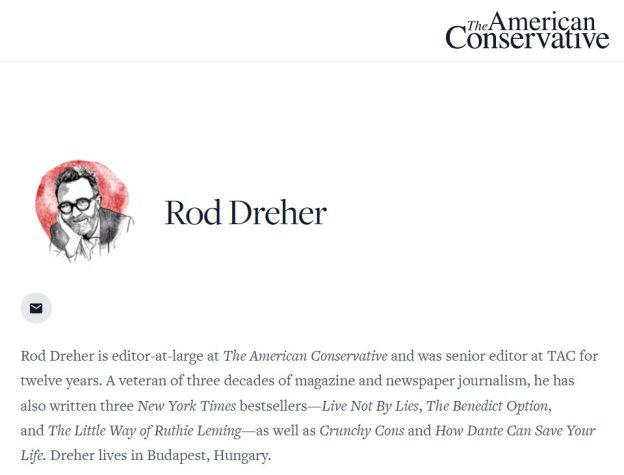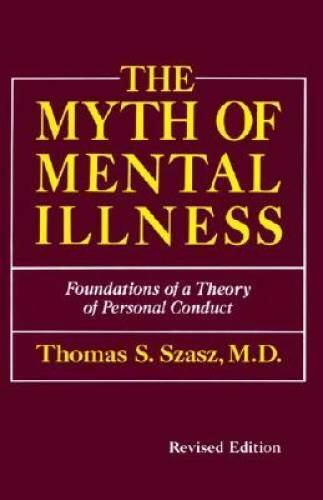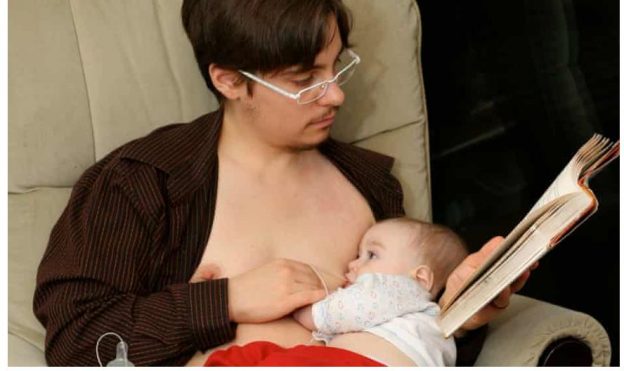By Juvenal Early
The American Conservative: From Pitchfork Pat to The Crunchy Con Castrate
The Rob Stove article, recently posted here on BAB, reminded me that I hadn’t thought of Rod Dreher (Old Dreary) in many months. I thought I’d check up on him. I know he’s living in Hungary now. He’s divorced, or about to be. Upon investigation, it turns out he’s on his own now, no longer under the auspices of The American Conservative (TAC), a lone blogger. Perhaps Dreher’s February exit from TAC was hastened by a piece he wrote last December, after he’d recently discovered (courtesy of a lefty doxxer) that his father (deceased for several years now) had once been in the KKK.
The normal semi-public figure, on learning such a thing, might put out a short statement: “This was a shock to me. I certainly never knew of it. I’m not now, nor have I ever been a Klansman or a fellow traveler, etc.” Something like that.
My G-d, this creep posted a 9400 word screed, an anxiety attack directly from the heart to the blog. I scrolled through it, reading fair-sized chunks, more than enough to get the point. The thing just went on and on, and often strayed from the (putative) central topic. All this hand-wringing self-pity. All Virtue signaling, with the obligatory reminders about how wise the great Christian (he wasn’t) MLK was. How he, Dreary, had moved back to Louisiana to be with his family 12 years earlier to help them out and to be helped. But they were mean to him, they rejected him, and he went on at length about how their meanness eventually destroyed his marriage. Like he couldn’t screw it up on his own. Oh, the horror. An endless hissy fit, replete with spluttering lines like, “I thought he was a horrible reactionary whose judgment could not be trusted on anything.” You say that word “reactionary,” Mr Dreher, like it’s a bad thing.
I mean, you don’t say the things he said about his family and put it out there for public consumption. It should be a private matter. Share it with a confidant, if you must. Talk to the family directly—and privately. Don’t squeal on and on about how awful your family is and put it out there for the whole world to see.
Apparently, the family mostly hates him—down to the aunts and uncles and cousins. Even the dead don’t have much use for the guy (although Dreher makes use of them; posting a hazy image of his late father, as he lay dying). Gee, I wonder why.
After reading large portions of Dreher’s apologia, a line from an old war movie, “The Bridges of Toko-Ri,” came back to me, viz., “Where do we get such men?” Irony very much intended. What does it say about TAC, that they would publish such melodramatic tripe? They’ve come a long way from Pitchfork Pat to the Crunchy Con. You’d think conservatism’s flagship publication might stand up for traditional values, e.g., honor, personal responsibility, family loyalty, toxic masculinity, etc. You’d at least think that the material they publish was—and it’s a low bar these days—conservative. But, then, TAC didn’t even stand up for their founder, Mr. Buchanan.
***************
“Juvenal Early” is a contributor to Barely A Blog and an all-round bon vivant for literature and high-culture. His 2020 piece, “The Dissident Right Has An Idiocracy Problem,” created quite the buzz.






